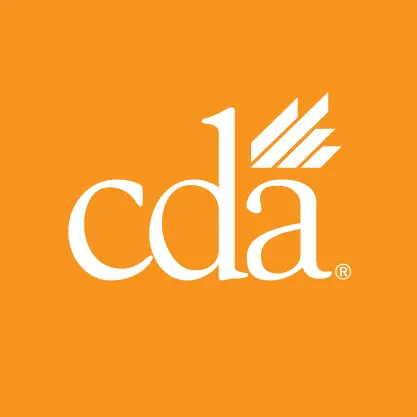Regulatory Compliance
Dental practice, environment & radiation, infection control, Cal/OSHA and HIPAA
Multiple state and federal agencies are charged with regulating dental practices. Keep on top of the compliance process by downloading our versatile and customizable resources.

Regulatory Compliance Manual: Table of Contents and Use Instructions
Identification, Evaluation and Selection of Engineering and Work Practice Controls
Staff must assess annually the effectiveness of the practice's safety procedures and devices and consider safety sharps. This form is part of the Regulatory Compliance Manual. Updated June 2024.
Individual Training Documentation Form
Use this form to document individual employee's annual training on the control of exposures to bloodborne pathogens. This form is part of the Regulatory Compliance Manual. Updated June 2024.
Infection Control and Cal/OSHA FAQ
FAQ on infection control, other Cal/OSHA regulations, training, personal protective equipment and inspections. This resource is part of the Regulatory Compliance Manual. Updated March 2024.
Infection Control Information Resources
This is a list of external websites with information pertinent to infection control at dental practices.
Information Blocking Rule Q&A
Learn more about the information blocking rule, which permits patients and others greater access to patient information. The rule is part of the 21st Century Cures Act, a federal law.
Information Privacy and Security - HIPAA, State Laws
This PowerPoint presentation can be used in conjunction with the dental practice’s written policies and procedures to train staff on compliance with HIPAA and state laws.
Informed Refusal for Hepatitis B Vaccination
Document employee’s refusal of employer's offer of the Hepatitis B vaccination on this form which has mandated language. This form is part of the Regulatory Compliance Manual. Updated June 2024.
Injury and Illness Prevention Plan
Customize sample plan to describe how the practice complies with safe work practices, communicates with staff and more. This resource is part of the Regulatory Compliance Manual. Updated June 2024.
Instrument Processing Protocol
Use this sample form to describe the practice’s sterilization protocol, as required by the Dental Board. This resource is part of the Regulatory Compliance Manual. Updated June 2024.
Introduction to Hand Hygiene
Intro to Hand Hygiene to help protect you and your patients.
IRS increases the standard mileage rate for business use in 2025
Employers who use the IRS standard mileage to reimburse employees who drive their personal cars on company business rate will need to pay a little more in 2025. The IRS announced on December 19 that the standard mileage rate for business use will increase to 70 cents per mile on January 1, 2025, up from 67 cents in 2024. These rates apply to electric and hybrid-electric automobiles, including gasoline- and diesel-powered vehicles.
Is it a Scam?
This information aims to assist members in safeguarding themselves by outlining the steps they can take when faced with attempted scams.
Jan. 1, 2016: Display whistleblower, injury posters
Dental practices must post California's Whistleblower Protection notice, printed no smaller than 8.5 inches by 14 inches, as well as Notice to Employees – Injuries Caused by Work, in both English and Spanish if dentists have Spanish-speaking employees.
Jan. 1, 2017: Implement new minimum wage
The minimum wage for a large employer with 26 or more employees in California will increase from $10 per hour to $10.50 per hour, and employers with 25 or fewer employees will remain at $10.00 until Jan. 1, 2018. Some cities and counties have their own ordinances beyond what is required by state law, with more expected to follow. CDA provides a guide to minimum wage ordinances by city and county and employers are advised to check with their local jurisdictions to ensure they are in compliance.
Jan. 1, 2017: Register to file and pay with EDD
Employers with 10 or more employees must register with the Employment Development Department's e-Services for Business and file all wage reports and employment tax returns and pay all contributions for unemployment insurance premiums electronically. All employers will be required to register and file under this new law beginning Jan. 1, 2018.
Jan. 1, 2017: Use updated informed consent forms
Written informed consent forms for the sedation/anesthesia of a minor patient must now include specific language. CDA has updated the forms to reflect the change. The language is as follows: “The administration and monitoring of general anesthesia may vary depending on the type of procedure, the type of practitioner, the age and health of the patient, and the setting in which anesthesia is provided. Risks may vary with each specific situation. You are encouraged to explore all the options available for your child’s anesthesia for his or her dental treatment, and consult with your dentist or pediatrician as needed.”
Jan. 1, 2022: New Anesthesia and Sedation Permits
Senate Bill 501, which changed requirements to hold general anesthesia and sedation permits, took effect. Any holder of a general anesthesia, conscious sedation or oral conscious sedation for minors permit is required to apply for a new permit once their current permit expires after Jan. 1, 2022. Implementing regulations and permit applications became available in August 2022. See the news article for more information.
Jan. 1, 2023: New C.E. Requirements
New C.E. requirements include a mandated opioid course for dentists and new activity eligible for earning C.E. credit. For more information see “Continuing Education Requirements and FAQ.”
Jan. 21, 2017: Employers must use updated Form I-9
Practice owners who are hiring or planning to hire new employees must use the new Employment Eligibility Verification Form I-9. As of Jan. 21, 2017, all previous versions of the form will become invalid. The new form is designed to be easier to use. It clarifies several points of confusion for employers, and includes embedded instructions for completing fields. The new form can be accessed via the U.S. Citizenship and Immigration Services website.
January 1, 2019: Amendments to clarify ambiguities to salary history ban law
The new law amends the Labor Code to specify that an employer may now ask for an applicant’s salary expectations for the position being applied for, only external applicants (not current employees) and are entitled to request a pay scale for the position they are applying for, but only after completing an initial interview. The pay scale provided only needs to include salary and hourly wage ranges. AB 2282
January 1, 2019: Enroll in or opt out of Medicare
Dentists who order or provide Medicare-covered items and services (clinical laboratory services, imaging services or durable medical equipment, prosthetics, orthotics and supplies) will need to either enroll in Medicare using form CMS-855-I (PDF) or the shorter enrollment form CMS-855-O (PDF) or formally opt out of Medicare by Jan. 1, 2019. To assure one's status with Medicare and that patients' Medicare benefits do not lapse, dentists should allow sufficient time for processing whichever form is submitted. Learn more about enrollment requirements by visiting the ADA’s Facts and FAQ on Medicare.
January 1, 2019: Implement new minimum wage increases
The minimum wage for a large employer with 26 or more employees in California will increase from $11 per hour to $12 per hour, and employers with 25 or fewer employees will increase from $10.50 per hour to $11 per hour on Jan. 1, 2019. Some cities and counties have their own ordinances beyond what is required by state law, with more expected to follow. CDA provides a guide to minimum wage ordinances by city and county and employers are advised to check with their local jurisdictions to ensure they are in compliance.
January 1, 2019: Mandatory opioid prescription discussion with minor or minor’s parent
Beginning Jan. 1, 2019, a prescriber is required to discuss the following with a minor or the minor’s parent or guardian before issuing the first opioid prescription in a single course of treatment:
- The risks of addiction and overdose associated with the use of opioids.
- The increased risk of addiction to an opioid to an individual suffering from both mental and substance-abuse disorders.
- The danger of taking an opioid with benzodiazepine, alcohol or another central nervous system depressant.
A new informed consent form, Consent to Prescribe Opioid to a Minor, (Spanish version) has been developed and is available on the TDIC and CDA Practice Support websites.
January 1, 2019: New infection control standard for procedures that expose dental pulp
When performing procedures on exposed dental pulp, water or other methods used for irrigation must be “sterile or contain recognized disinfecting or antibacterial properties.”
January 1, 2019: Prescriber obligation to prescribe and educate on naloxone use
As of Jan. 1, 2019, a prescriber must offer a patient a prescription for naloxone hydrochloride or other FDA-approved drugs for the complete or partial reversal of opioid depression when one or more of the following conditions are present:
- The prescription dosage for the patient is 90 or more morphine milligrams equivalent of an opioid medication per day. (See this CDC document on how to calculate MME.)
- Opioid medication is prescribed concurrently with a prescription for benzodiazepine.
- The patient presents with an increased risk for overdose, including a patient with a history of overdose, a patient with a history of substance use disorder or a patient at risk for returning to a high dose of opioid medication to which the patient is no longer tolerant.
Additionally, a prescriber must provide education to a patient, or the patient’s guardian if the patient is a minor, receiving a prescription per the above circumstance on overdose prevention and the use of naloxone hydrochloride or other FDA-approved drugs for the complete or partial reversal of opioid depression. AB 2760
January 1, 2019: Update standard mileage reimbursement rate for 2019 (released by Internal Revenue Service)
See the IRS’s press release. For business expense reimbursement, the 2019 rate is $0.58 per mile. That’s up $0.035 from last year. California employers need to reimburse such common expenses as work-related travel, dining expenses and mileage when an employee uses a personal car for work-related business. However, employees who can prove they spend more than $0.58 per mile to operate their personal vehicles for business use may be entitled to reimbursement of the actual expense. It’s up to the employees to prove their expenses, however.
